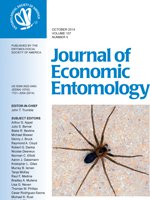Although many reports suggested the economic importance of the red imported fire ant, Solenopsis invicta Buren, few attempts to test the hypothesis that the red imported fire ant-aphid mutualism enhances the occurrence of red imported fire ant on crops, thereby interfering with their flowering and fruiting and affecting their output. To address this problem, we compare the effects of red imported fire ant on the flowering and fruiting of self-pollinating and cross-pollinating crops by field investigations and indoor experiments. In the field, our results revealed that regardless of the aphid interaction, red imported fire ant preferred flowering mungbean plants, and their activities decreased the yields of single plants, total pod number, kernel number, and kernel weight. The interaction of red imported fire ant and aphids generated unfavorable effects on rapeseed yields per plant, total pod number, grain number, grain weight, and thousand-kernel weight and stimulated an elevated proportion of malformed seeds. However, the differences were not significant if only red imported fire ant was present. In the laboratory, although red imported fire ant display no apparent preference toward the seedlings of mungbean or rapeseed, the ants clearly favor the flowering plants of mungbeans. Therefore, this study indicated that one of the main mechanisms whereby red imported fire ants affect the crop yield is by compromising the reproduction processes.
BioOne.org will be down briefly for maintenance on 17 December 2024 between 18:00-22:00 Pacific Time US. We apologize for any inconvenience.
How to translate text using browser tools
1 October 2014
Effects of Solenopsis invicta (Hymenoptera: Formicidae) and Its Interaction with Aphids on the Seed Productions of Mungbean and Rapeseed Plants
Duan Wu,
Ling Zeng,
Yongyue Lu,
Yijuan Xu
ACCESS THE FULL ARTICLE
It is not available for individual sale.
This article is only available to subscribers.
It is not available for individual sale.
It is not available for individual sale.

Journal of Economic Entomology
Vol. 107 • No. 5
October 2014
Vol. 107 • No. 5
October 2014
ecological impact
economic outcome
honeydew-producing insect
Invasive ant




